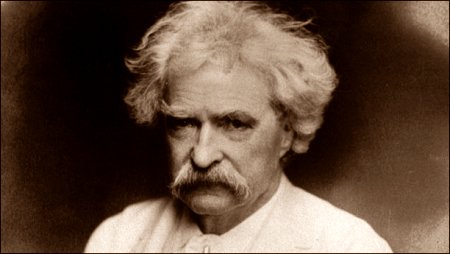Mark Twain: The First Writing-Machines

Mark Twain
(1835-1910)
The First Writing-Machines
From My Unpublished Autobiography
Some days ago a correspondent sent in an old type-written sheet, faded by age, containing the following letter over the signature of Mark Twain:
“Hartford, March 19, 1875.
“Please do not use my name in any way. Please do not even divulge the fact that I own a machine. I have entirely stopped using the type-writer, for the reason that I never could write a letter with it to anybody without receiving a request by return mail that I would not only describe the machine, but state what progress I had made in the use of it, etc., etc. I don’t like to write letters, and so I don’t want people to know I own this curiosity-breeding little joker.”
A note was sent to Mr. Clemens asking him if the letter was genuine and whether he really had a type- writer as long ago as that. Mr. Clemens replied that his best answer is in the following chapter from his unpublished autobiography:
1904. Villa Quarto, Florence, January.
Dictating autobiography to a type-writer is a new experience for me, but it goes very well, and is going to save time and “language”—the kind of language that soothes vexation.
I have dictated to a type-writer before—but not autobiography. Between that experience and the present one there lies a mighty gap—more than thirty years! It is a sort of lifetime. In that wide interval much has happened—to the type-machine as well as to the rest of us. At the beginning of that interval a type- machine was a curiosity. The person who owned one was a curiosity, too. But now it is the other way about: the person who doesn’t own one is a curiosity. I saw a type-machine for the first time in—what year? I suppose it was 1873—because Nasby was with me at the time, and it was in Boston. We must have been lecturing, or we could not have been in Boston, I take it. I quitted the platform that season.
But never mind about that, it is no matter. Nasby and I saw the machine through a window, and went in to look at it. The salesman explained it to us, showed us samples of its work, and said it could do fifty- seven words a minute—a statement which we frankly confessed that we did not believe. So he put his type-girl to work, and we timed her by the watch. She actually did the fifty-seven in sixty seconds. We were partly convinced, but said it probably couldn’t happen again. But it did. We timed the girl over and over again—with the same result always: she won out. She did her work on narrow slips of paper, and we pocketed them as fast as she turned them out, to show as curiosities. The price of the machine was $125. I bought one, and we went away very much excited.
At the hotel we got out our slips and were a little disappointed to find that they all contained the same words. The girl had economized time and labor by using a formula which she knew by heart. However, we argued—safely enough—that the first type-girl must naturally take rank with the first billiard-player: neither of them could be expected to get out of the game any more than a third or a half of what was in it. If the machine survived—if it survived—experts would come to the front, by-and-by, who would double this girl’s output without a doubt. They would do one hundred words a minute—my talking speed on the platform. That score has long ago been beaten.
At home I played with the toy, repeating and repeating and repeating “The Boy stood on the Burning Deck,” until I could turn that boy’s adventure out at the rate of twelve words a minute; then I resumed the pen, for business, and only worked the machine to astonish inquiring visitors. They carried off many reams of the boy and his burning deck.
By-and-by I hired a young woman, and did my first dictating (letters, merely), and my last until now. The machine did not do both capitals and lower case (as now), but only capitals. Gothic capitals they were, and sufficiently ugly. I remember the first letter I dictated. It was to Edward Bok, who was a boy then. I was not acquainted with him at that time. His present enterprising spirit is not new—he had it in that early day. He was accumulating autographs, and was not content with mere signatures, he wanted a whole autograph letter. I furnished it—in type-machine capitals, signature and all. It was long; it was a sermon; it contained advice; also reproaches. I said writing was my trade, my bread-and- butter; I said it was not fair to ask a man to give away samples of his trade; would he ask the blacksmith for a horseshoe? would he ask the doctor for a corpse?


Mark Twain short stories
kempis poetry magazine
More in: Archive S-T, Twain, Mark

